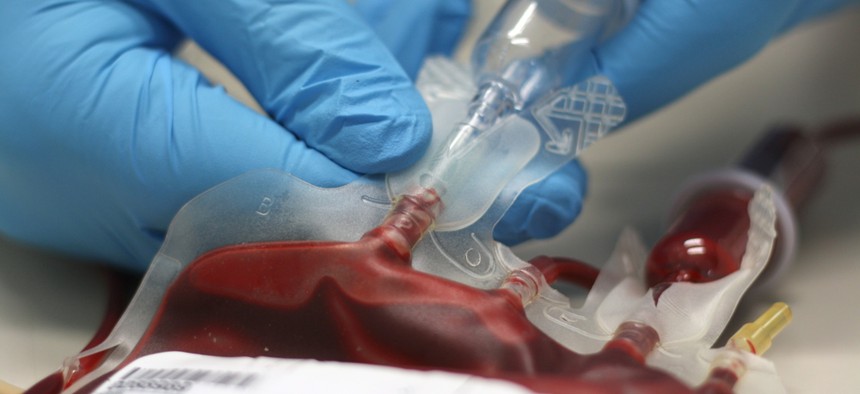
SebGross/Shutterstock.com
The Bias in the FDA's New Blood Donation Rules
On Tuesday, the government agency announced it was lifting its ban on gay male blood donors. The fine print, however, was troubling.
Last month, an advisory panel in the Department of Health and Human Servicesvoted to recommend the lifting of a ban on blood donation by gay and bisexual that dates all the way back to the early 1980s. The decision paved the way for FDA to end the ban, which it did on Tuesday.
In a statement, the agency announced that it "will take the necessary steps to recommend a change to the blood donor deferral period for men who have sex with men." Headlines capturing the landmark shift read "F.D.A. Lifting Ban on Gay Blood Donors" and enthusiasm characterized some of the response to the news on social media. However, there was a "but" that went somewhat unnoticed.
The FDA may have lifted its lifetime ban, which was discriminatory and based on an archaic stigma attached to the AIDS epidemic that first bore the prohibition, but in its place, the agency is enacting a deferral that sets "one year since the last sexual contact" as the new threshold for blood donation for gay men.
"I predict blood donation drops because it's way less embarrassing to lie about being gay than to lie about being celibate," one observer remarked. It's a great line, but also highlights the complexity and the absurdity of a policy that is already based on a wayward honor system of sorts. As many have noted, the new policy conforms with that of a number of countries including the United Kingdom, Sweden, Australia, and Japan, all of which use the one-year ban.
Nevertheless, as Elaine Teng pointed out, the one-year deferral puts gay or bisexual men on the same donor pool as "heterosexuals who have had sex with someone who is HIV-positive, and heterosexuals who have had sex with a sex worker." In other words, the standard for gay identity is equal to action for heterosexuals. Following the announcement, the group Gay Men's Health Crisisissued a critique of the updated standards.
This new policy does not require heterosexual blood donors to be celibate for one year. Some may believe this is a step forward, but in reality, requiring celibacy for a year is a de facto lifetime ban.
As the AP reports, government figures show the gay and bisexual men "represent about 2 percent of the U.S. population, yet account for at least 62 percent of all new HIV infections in the U.S." Others have countered that the rationale to focus policy on gay men is inconsistent given the oscillating rates of HIV across different ethnic and genders lines.
Both the old system and the new system are rightly complicated for a number of reasons. Many would say these are the wrong reasons.
(Image via SebGross/Shutterstock.com)






